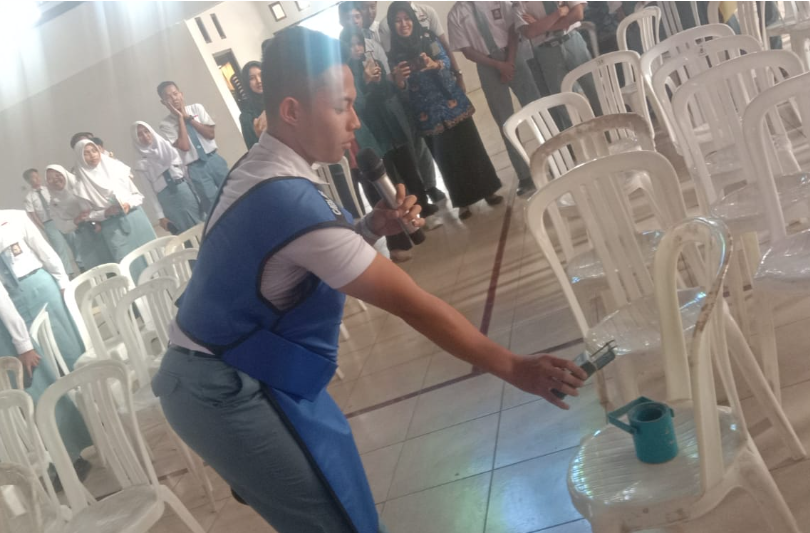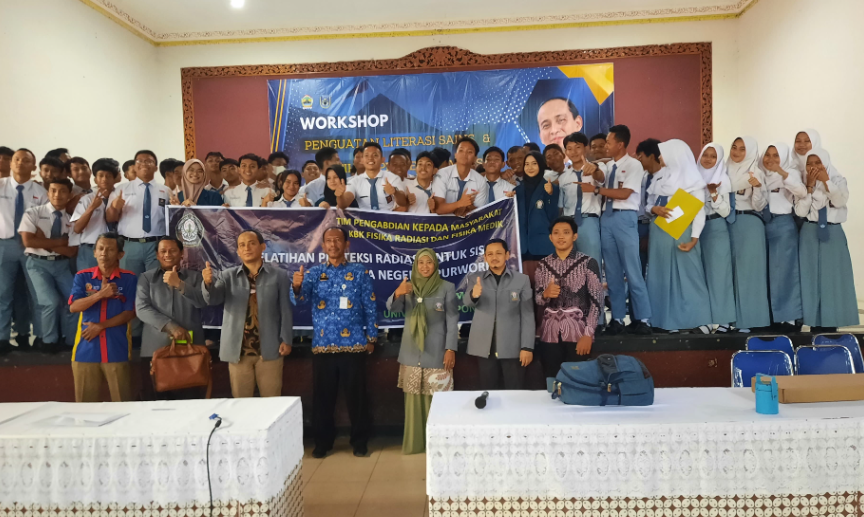The daily life that we lead is inseparable from radiation, whether it comes from nature or is artificially created by humans and utilized in various fields such as technology, industry, healthcare, communication, food, and so on. Radiation can be beneficial for human welfare if used properly and in accordance with established regulations. However, if radiation is misused and safety regulations are disregarded, it can become a disaster for humanity.
Radiation is the process of transferring energy through a medium or space in the form of electromagnetic waves. Some radiation is harmless because its energy is small and it cannot penetrate a medium or has low penetrating power (such as alpha and beta rays), while other radiation is harmful due to its high energy, capable of penetrating through media and even the human body, as well as thick walls (such as X-rays and gamma rays). To provide protection against the effects of this radiation, especially harmful ionizing radiation, a safety program known as radiation protection is necessary.
In order to provide early insights and information about the dangers of radiation and its protection, the Radiation Physics and Medical Physics Research Group from the Department of Physics, FSM UNDIP conducted a “Radiation Protection Training for Students at SMA Negeri 2 Purworejo” on Monday (1/10).
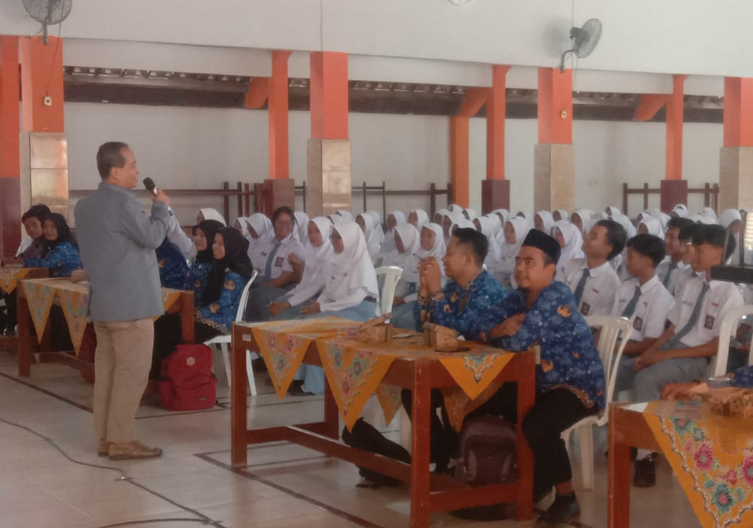
The event was opened by Eko Hidayanto, the head organizer of this Community Service, introducing the Physics study program in general and the Radiation and Medical Physics Research Group, as well as the Medical Physicist profession, and the activities of the Higher Education Tri Dharma in terms of education, research, and community service that have been and continue to be developed by Diponegoro University’s Physics Department. On this occasion, Eko Hidayanto also presented the achievements of Diponegoro University’s Physics Department, highlighting its various accomplishments at both the national and international levels.
The event continued with a presentation by Pandji Triadyaksa, M.Sc., who explained about the radiation protection system. In the utilization of radiation, to ensure the safety of workers/radiation officers, patients (those subjected to radiation), and others around them, it is necessary to consider the philosophical principles in the use of radiation. First, the use of radiation must provide more benefits than harm (the principle of justification). Second, if radiation must be used, it should be with the lowest possible dose (the principle of optimization). Third, there is a need to establish dose limits that must be accepted (limitation). In terms of radiation protection, there are three things to consider: the time factor, by minimizing the exposure time as much as possible, the distance factor, by creating as much distance as possible from the radiation/source, and the shielding factor, by using appropriate protection for certain types of radiation, for example, using lead (Pb) shielding, which is a good radiation absorber.
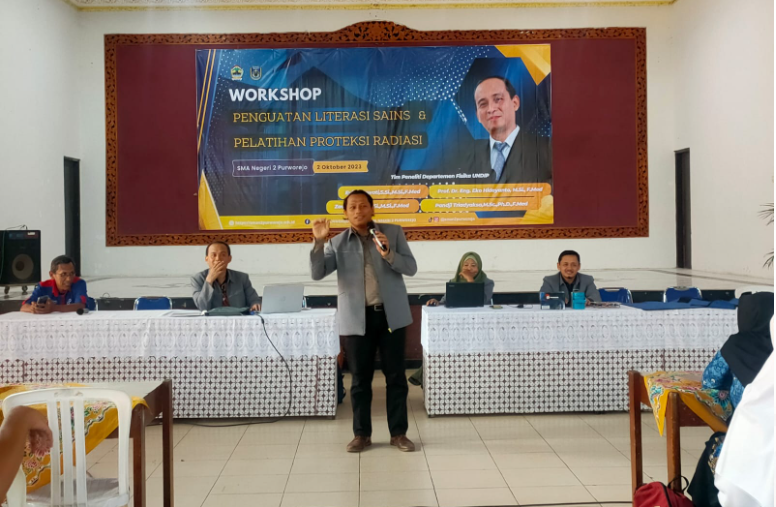
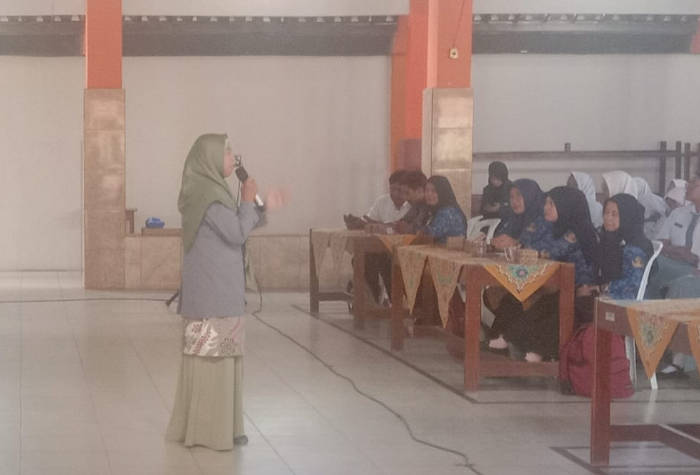
The next material was presented by Evi Setiawati, M.Si., explaining the biological effects that may occur in the body when exposed to ionizing radiation. These effects can occur acutely or immediately after receiving radiation, or they can be delayed effects from days to several years after exposure to radiation. Radiation effects can also be seen in terms of cell types, namely somatic cells and genetic cells. For the purpose of Radiation Protection, radiation effects can be divided into deterministic effects and stochastic effects. Deterministic effects will occur if the dose given exceeds the threshold dose and will become more severe as the dose increases. Stochastic effects, on the other hand, are random in nature.
The final material was presented by Zaenal Arifin, M.Si., about radiation measurement to monitor the level of radiation emitted, including beta, gamma, and X-ray radiation. Radiation can be identified and quantified using a measuring instrument called a radiation detector. The types of radiation detectors commonly used include gas-filled detectors, scintillation detectors, and solid-state detectors (usually made of semiconductor materials). The use of radiation measurement systems is commonly employed for radiation protection activities and for nuclear radiation application/research activities.
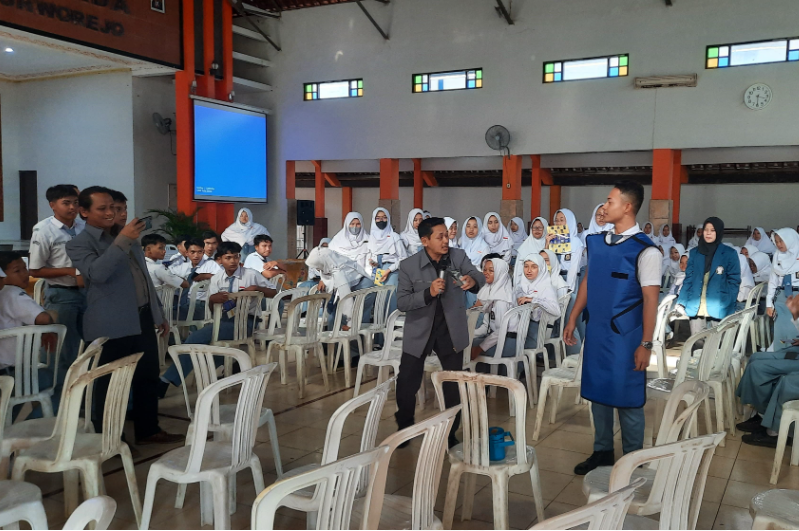
The measurement instruments for radiation protection are divided into three types, namely personal dosimeters, survey meters, and contamination monitors. Meanwhile, for laboratory research, counting systems and spectroscopy are commonly used.
After the presentation, a brief practical session on radiation protection systems was conducted, involving the detection of radiation sources using a detector and the use of protective equipment (PPE) such as an apron. Following the presentation and practical session, a discussion was held with the students of SMA Negeri 2 Purworejo. The participants were enthusiastic and eager to ask questions related to the material presented by the speaker. During the event, the speakers also posed some questions that were correctly answered by the students. The students who asked and answered questions were rewarded with door prizes, in the form of internet data packages. This event was attended online by approximately 200 students and teachers from SMA Negeri 2 Purworejo. (Public Relations)
